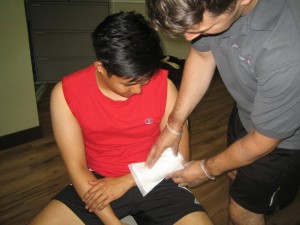A scald is brought about by exposure to steam or hot water. Children below 5 years old and elderly over 65 years old are at high risk for this type of burn.
A scald from hot water can trigger pain and damage the skin. Remember that this injury is considered dangerous since it destroys the affected tissues and cells. In severe cases, the burn can be dangerous.
What are the effects of a hot water scald?
A scald is both painful and dangerous. The seriousness of the symptoms is based on the severity of the burn.
The main categories of burns are based on the skin damage such as:
- Superficial epidermal burn – this burn involves the epidermis and causes some swelling, pain and redness
- Superficial dermal burn – this type of scald involves the dermis which affects the nerve endings, hair follicles and blood vessels. The affected area might have pale pinkish skin with some degree of pain and blisters.
Wrap the burn site with a clean cloth or moist bandage. - Deep dermal or partial thickness burn – the first 2 layers of the skin are damaged. The burn might be extremely painful or painless. The skin turns red with or without moisture along with swelling and blistering.
- Full-thickness burn – this type affects all the 3 layers of the skin and requires prompt medical care. There is a change in the skin texture and the affected area is blackened.
Management of a scald
In most cases, a scald can be managed at home. Some of the measures that can be used to treat the injury include:
- Remove the source of heat to prevent further injury
- The burned site must be placed under cool running water to cool it for at least 20 minutes. Make sure that the individual is kept warm during this process to maintain the correct body temperature.
- In case the burn involves a wide section of the body, do not submerge in cool water. This can result to the loss of body heat and further worsen the injury.
- Remove jewelry or clothing close to the affected site to lower the temperature on the skin and allow room for swelling. If items adhere on the burn, do not remove them since this can result to further damage.
- Wrap the burn site with a clean cloth or moist bandage
- If possible, raise the affected site above the level of the heart.
- If blisters are present, do not break them open.
Remember that a scald will take time to recuperate. A mild case might only take days while severe cases can take weeks to fully heal.
Disclaimer / More Information
The information posted on this page on a scald is for learning and educational purposes only. To learn to properly manage this injury, register for first aid training at one of our training centers located throughout Canada. The training centers are in Edmonton, Calgary, Vancouver, Kelowna, Saskatoon, Victoria, Surrey, Mississauga, Winnipeg, Red Deer, Toronto, Ottawa and Halifax.

